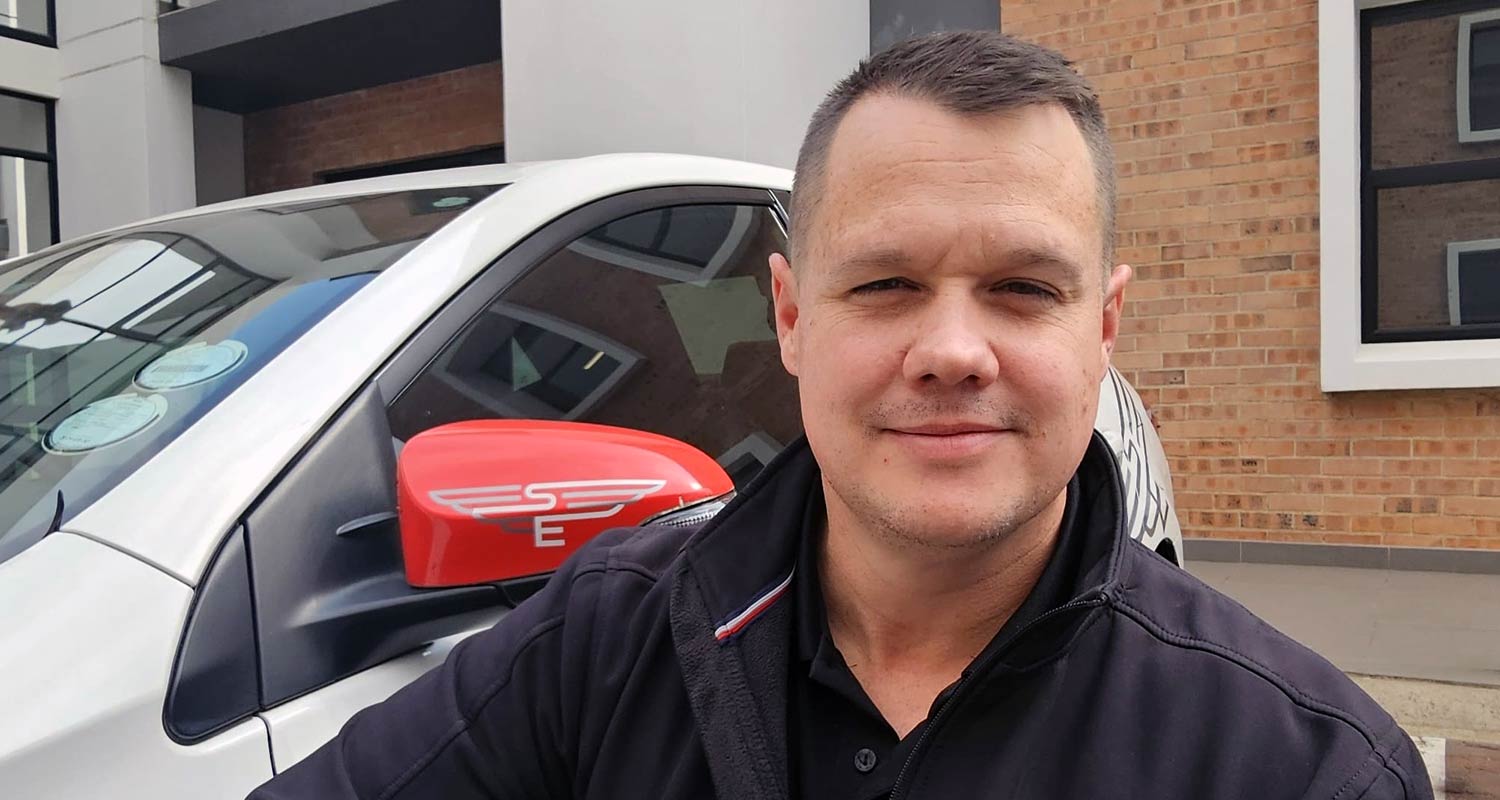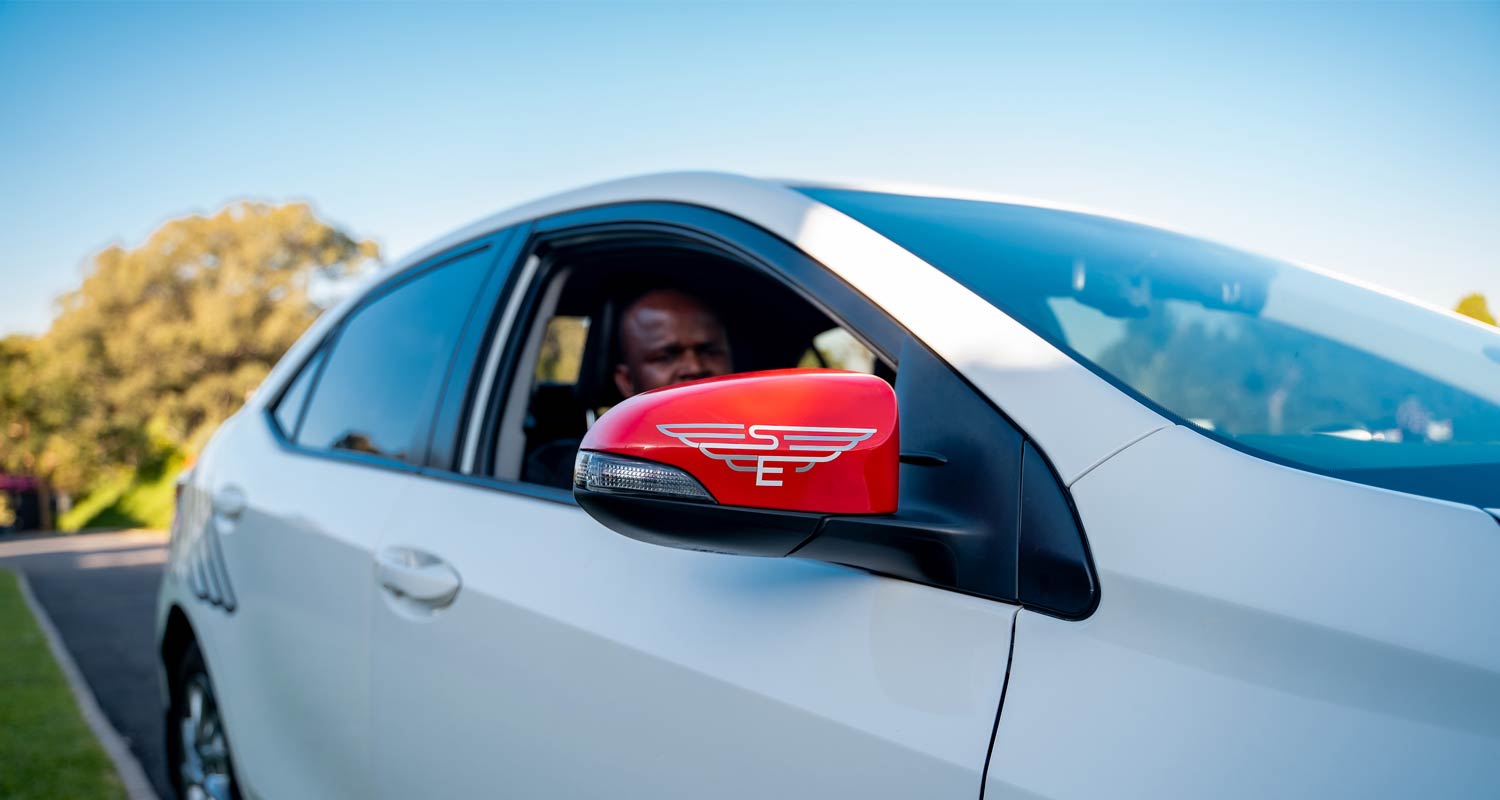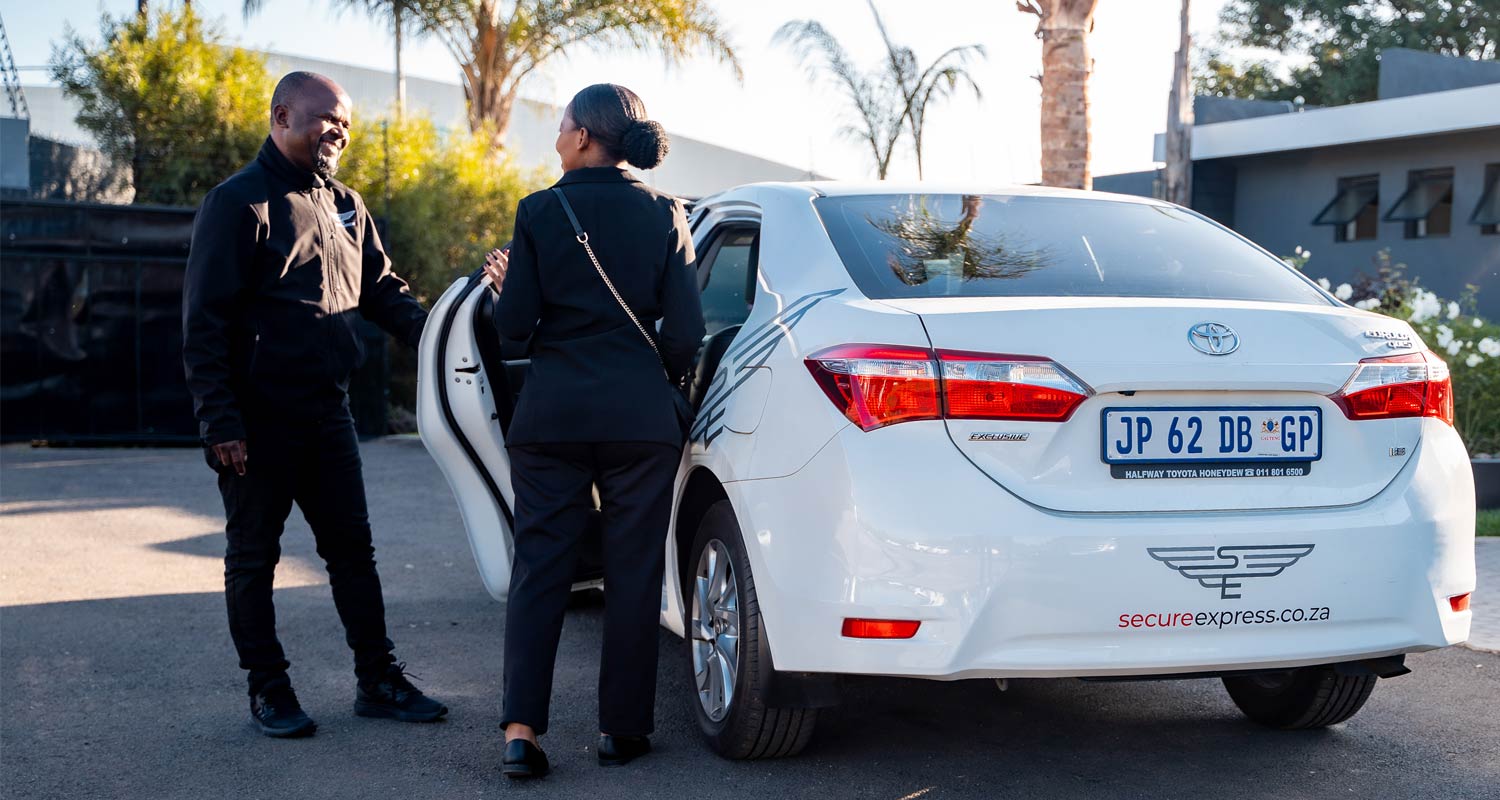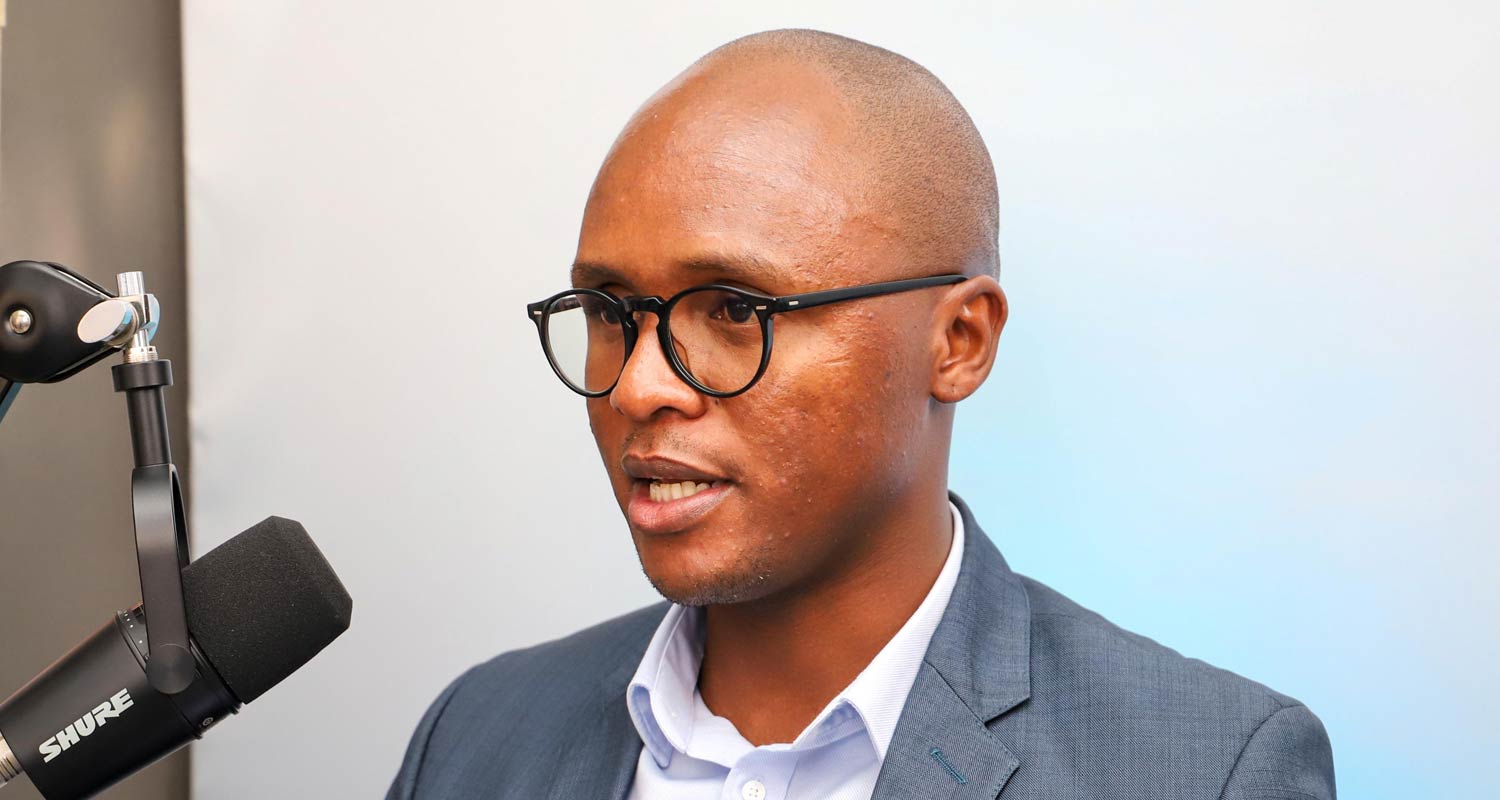 Glenn Howell of Secure Express
Glenn Howell of Secure ExpressA Johannesburg company is taking on ride-hailing giant Uber Technologies, offering what it says are more comfortable and significantly more secure rides.
The company, Secure Express, is part of protective services specialist Arcfyre International, and has made rider safety, comfort and customer service its top priorities as it seeks to carve out a slice of the market from established rivals.
The company’s head, Glenn Howell, told TechCentral in a recent interview that Secure Express is “very different to other e-hailing businesses” in that it owns its fleet of vehicles and directly employs its own drivers.
This, said Howell, has eliminated some of the biggest problems in e-hailing: Secure Express drivers are not incentivised to decline or accept rides, depending on whether or not they’ll maximise their ride earnings. It has at times become difficult for customers to get a ride on some ride-hailing platforms, particularly for shorter journey, as drivers don’t feel it’s worth their while.
The company is also “very selective” when employing drivers, rejecting on average nine in 10 applications it receives. Every employed driver has to go through a rigorous training programme, which includes first aid, advanced driving and customer service skills, Howell said. They are then assigned a Toyota Corolla from the Secure Express fleet.
Command centre
He said the main reason customers are turning to Secure Express is the security it offers riders, with vehicle locations tracked in real time from a dedicated command centre in Johannesburg.
According to Howell, the company ensures all rides booked on the platform are monitored throughout the journey. Its systems also constantly monitor for trouble spots across the city, and routes drivers around these. Riders are, however, given the option to take the fastest route, or to avoid higher-risk areas.
If a rider’s vehicle deviates from its pre-assigned route, Secure Express customer support will be instantly alerted, and the team can then activate in-vehicle cameras (passenger privacy is maintained as the cameras only face the front seats, including the driver) to get a visual of potential problems. They will then assess if the ride is under any kind of duress and react appropriately if it is – for example by alerting the police and sending its own reaction team to the scene.
 “The moment the system flags that a vehicle has gone off-route, [the command centre] phones the passenger and asks if everything is okay,” Howell said. If there’s no reply, further action is then taken. As with other ride-hailing platforms, there is also an SOS button in the Secure Express app, which customers can use in an emergency.
“The moment the system flags that a vehicle has gone off-route, [the command centre] phones the passenger and asks if everything is okay,” Howell said. If there’s no reply, further action is then taken. As with other ride-hailing platforms, there is also an SOS button in the Secure Express app, which customers can use in an emergency.
Howell said another differentiator versus other ride-hailing apps is Secure Express’s focus on customer service and rider comfort.
“Customers love having a clean car and having a driver who doesn’t play on his phone during the ride. The driver will ask if you are comfortable and which radio station you want to listen to. There is also free Wi-Fi in each vehicle. The idea is that you concentrate on what you want to do [during the trip],” he said.
“Our guys also go the extra mile around things like airport pickups. They are not positioned at the e-hailing spaces at the airports. They park and meet you in arrivals and escort you to the vehicle.”
According to Howell, about three-quarters of regular riders using Secure Express are women, and a large proportion of its client base are businesspeople who want a secure ride but who don’t want the expense of hiring a vehicle and driver for an entire day. The platform is also used commonly by parents, worried about safety, to ferry their children around with greater peace of mind than they might get through other ride-hailing services.
Drivers are trained to deal with high-risk situations, such as a vehicle hijacking. They are not trained to fight armed criminals but rather to de-escalate the situation as much as possible and to ensure the safety of their riders.
Security
“It’s about getting their passenger out of the vehicle and handing it over to the hijacker as quickly and efficiently as possible,” he said, adding that the company runs regular simulations of potential incidents with its drivers, who are never armed on the road. Drivers are trained to be aware of potential security problems on the road and must remain alert at all times to their surroundings – which means, for example, never fiddling with their phones while carrying passengers.
Drivers are not allowed to exceed regulated speed limits.
Read: Uber, BYD in deal to roll out EVs worldwide
The average wait time for a ride in Johannesburg is between seven and nine minutes – comparable to other ride-hailing platforms. “We are strategic about positioning our drivers around the city based on demand, using heat maps,” Howell said.
Although only available in Johannesburg for now, Secure Express has plans to launch the service in Cape Town soon, with other cities to follow. It charges a flat rate of R15/km, and there are no waiting-time fees (at the airport, for example).
 “We like to price it at a bit more than an Uber Black, but sometimes we are cheaper, especially for short trips. We have no surge pricing, for example. Before you book, you know what you will be charged.”
“We like to price it at a bit more than an Uber Black, but sometimes we are cheaper, especially for short trips. We have no surge pricing, for example. Before you book, you know what you will be charged.”
Interestingly, unlike rivals like Uber, there is no surge pricing when using Secure Express. Dealing with spikes in demand is an “ongoing challenge”, Howell concedes, “but I don’t want to employ the surge pricing model. Instead, we want to move to ‘ride stacking’: you will have a 20- or even 40-minute wait. But you’ll have certainty that your ride is on its way.”
Howell said the traditional ride-hailing model is a “race to the bottom on pricing and quality”. Ride-hailing companies are constantly cutting costs, he said. “Vehicle quality gets poorer and poorer – it’s shocking!” — © 2024 NewsCentral Media



 3 hours ago
20
3 hours ago
20









